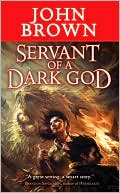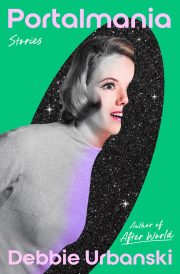Key Conditions for Suspense:
Part 19 – Use Patterns & Options, Not Formulas
by John D. Brown
 The following is part of a continuing series. If you wish to start at the beginning, head to It’s All About The Reader.
The following is part of a continuing series. If you wish to start at the beginning, head to It’s All About The Reader.
Too Many Variables
The three phases of problem solving form the basic structure of a story that builds suspense in readers. As I said in my last post, we need a bit more detail to translate the three phases into the events and scenes of a specific story. But before we move into those details, I want to take a moment to talk about what I think is the wrong way approach to structure.
That wrong way to is to use formulas for the details that go in your three phases. A formula is a static thing. It’s a specific set of steps you follow every time. So one plot formula might be to structure your story with a 25-50-25 proportion—25% for the presentation phase, 50% for the struggle, and 25% for the resolution. Another formula might be that the structure must show the character change. Another formula might state that you must have a major reversal at the 50% mark. Another one might be that the hero has to refuse to engage the problem, and so the presentation phase must include this. I remember one popular story guru had a formula he taught to screenwriters in which he claimed every romantic comedy required that the two love interests must dance!
The problem with these requirements is that they do not hold up when you start comparing these requirements to a sampling of stories that actually work.
We have three phases for suspense. A number of events will occur in each phase. But there are simply too many variables for there to be one best sequence of events for giving the reader the type of experience we hope to deliver.
Think about this mathematically. If we have three phases to solving a problem, and there are three sequence options for the events in each phase, then we have 27 different possible combinations. 27 different possible event sequences or plot patterns!
But there are more than three options in each phase. There are dozens, maybe hundreds, of possibilities for each of the story elements listed below. And each choice can affect the sequence of events in your story.
- Type of problem
- Number of sub-problems (sub-plots) included in the story
- Types of characters
- Character personalities & traits
- Numbers of characters in the story
- Places where the problem takes place
- Character motives for solving the problem or opposing its resolution
- Reasons why the character must face the problem
- Actions that may work to solve the problem
- The skills and resources the character can bring to bear on the problem
- The skills and resources the opposition can bring to bear on the problem
- Obstacles to solving the problem
Do you see? There are just too many variables to say there’s one sequence of events that’s best, even though you will run across folks who propose just that.
Building stories is like building houses. Yes, you need a foundation, walls, and a roof, but holy cow–look at all the variations that are possible AND successful given those basic requirements!
So instead of thinking there’s ONE ultimate magical structure, I’ve found it’s more productive to identify many event sequence patterns that can work. What this does is give me options, not a Procrustean bed of plot or structure.
This is one reason why reading other stories is such a powerful way to increase your skills—you get to see so many patterns that do and don’t work. This gives you a whole catalog of options that you can use or tweak into new variations for your own stories.
For example, if you’re writing about a heist, then look at how real and fictional characters have tried to solve that problem. If you’re writing about a chase, do the same. Stories about romance and friendship problems have certain patterns as do stories about catching spies and solving mysteries.
If you want to present your story’s problem in an exciting way, look at how a number of authors have worked that phase. If you feel your struggle phase needs oomph, identify some things other authors have done to make theirs electric.
Think patterns and options.
You can use what you find without much modification, or you can change it to suit your purposes, always keeping in mind the type of experience you hope to deliver to the reader.
Thank You, Little Plot Pattern
This idea of plot patterns is actually one of the things that helped me learn to how to finish stories. I once reached a point where I was going to give up my dream of writing. I was in a week-long workshop and couldn’t finish the story that we were supposed to write. I’d worked on it for at least fourteen hours and didn’t even have the opening scene. This was five years after I had won the Writers of the Future prize. Five years in which I couldn’t finish a story of any kind.
It’s not that I didn’t have ideas. I had bucket loads of cool problem, character, and setting. But there was something I lacked. I didn’t understand the key fourth story element—I lacked plot. So with this particular story, I didn’t know how to proceed. I didn’t understand how to present this type of problem or show the character struggling to solve it.
Heck, I wasn’t even thinking in those terms. I was just flailing about, concluding that this was the moment of terrible clarity showing me I didn’t have what it took to be a writer—didn’t have the DNA, personality type, or literary “gifts.” My one success had been a fluke.
So I sat in a restaurant on that Thursday night contemplating the fact that my dream was going to be put away for good, because I was determined not to waste another minute or dollar on something in which I had no chance of being successful. Luckily (or perhaps with some help) about an hour before I gave it all up, I stumbled into thinking that maybe I could apply to my story a pattern of events I’d seen used elsewhere. It was a pattern for the presentation of the problem, the struggle, and the resolution.
I applied the one little pattern I knew for that type of story problem. Suddenly, the lights went on, the music began to play, and the story came to life. The scenes rolled out in front of me. And I wrote a story that went on to sell multiple times. More importantly, I was able to continue to finish stories afterwards.
And I was able to continue NOT because I found the Philosopher’s Stone of Structure. There are many plot patterns for the type of story I was writing that could have worked. It wasn’t a specific plot pattern I had found. It was the idea to use and look for patterns and options.
This lack of understanding about plot wasn’t the only thing that was keeping me back at the time, but it was one of the main ones. Looking for patterns and variations has been useful to me ever since.
So let me recommend you think about and look–not for some formula or grand master sequence of acts, plot points, or events–but for effective event patterns (plural) and options for the types of story problems you write about. When you do, I think you’ll find your stories come easier.
To get you started, in the next posts I’m going to describe some of the patterns and variations I’ve seen in each of the three story problem-solving phases. It will take about eight posts to explain them all. Each option is a tool I think you’ll want in your story workshop. None of them are the golden key to success. However, each of them is an option that can work, depending on the story and your objectives.
Happiness,
John
•••
 John Brown is an award-winning novelist and short story writer. Servant of a Dark God, the first book in his epic fantasy series, was published by Tor Books and is now out in paperback. Forthcoming novels in the series include Curse of a Dark God and Dark God’s Glory. He currently lives with his wife and four daughters in the hinterlands of Utah where one encounters much fresh air, many good-hearted ranchers, and an occasional wolf.
John Brown is an award-winning novelist and short story writer. Servant of a Dark God, the first book in his epic fantasy series, was published by Tor Books and is now out in paperback. Forthcoming novels in the series include Curse of a Dark God and Dark God’s Glory. He currently lives with his wife and four daughters in the hinterlands of Utah where one encounters much fresh air, many good-hearted ranchers, and an occasional wolf.
For a list of all of the posts in this series thus far, click on the “John D. Brown” tag.


